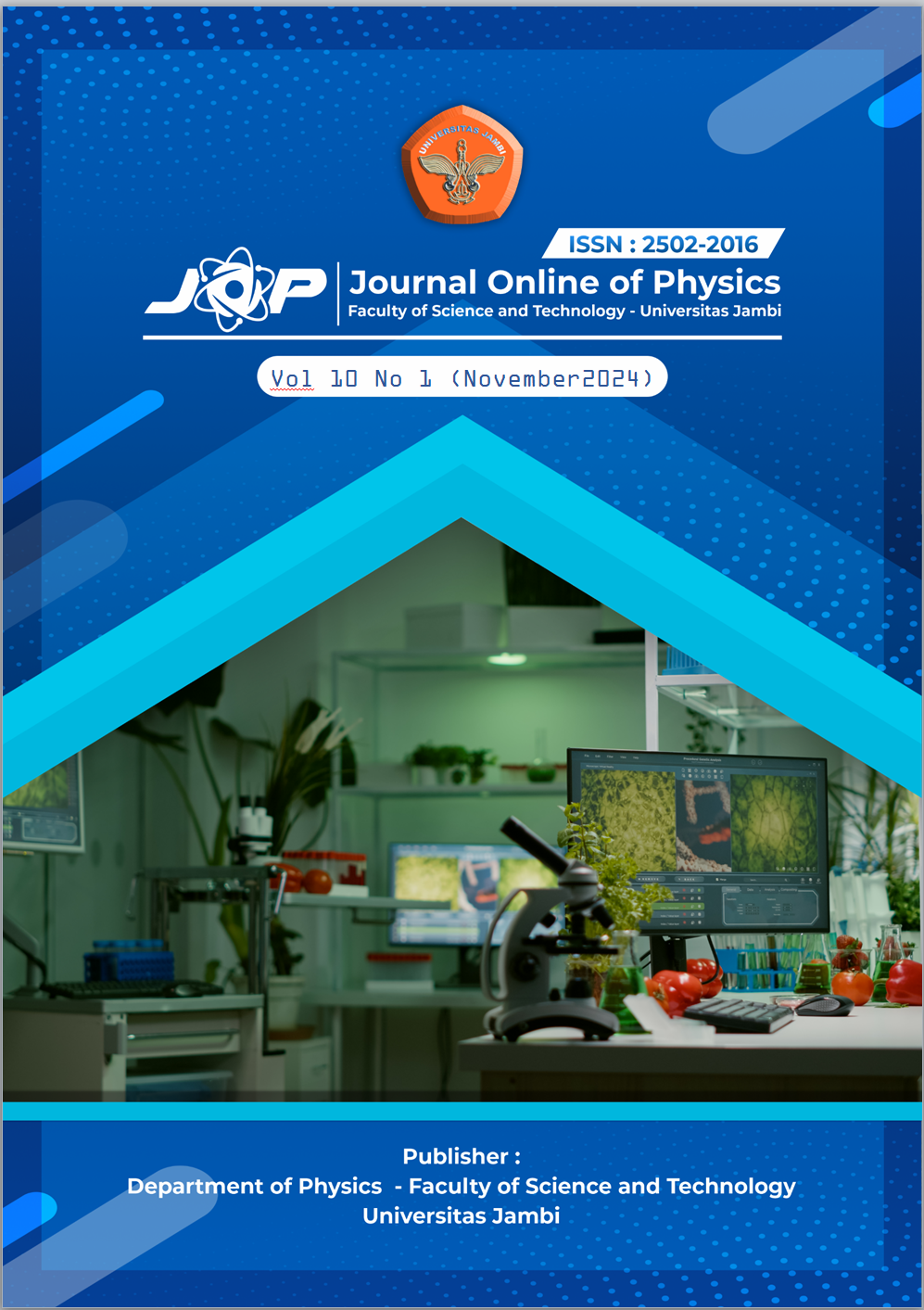PEMODELAN DINAMIKA SUMBER TEKANAN GUNUNG SINABUNG DENGAN SKEMA INVERSI VERY FAST SIMULATED ANNEALING (VFSA)
DOI:
https://doi.org/10.22437/jop.v10i1.36661Keywords:
Gunung Sinabung, Inversi, VFSA, GPS, Sumber TekananAbstract
Gunung Sinabung mulai erupsi pada tahun 2010 hingga saat ini (2021), berdasarkan hal tersebut maka perlu dilakukan analisis terkait Gunung Sinabung guna memprediksi posisi dan perubahan sumber tekanan dari Gunung Sinabung. Untuk mengetahui kondisi bawah permukaan dari Gunung Sinabung maka dilakukan inversi dari data diatas pernukaan yang dimiliki salah satunya yaitu data GPS (Global Positioning System), yang kemudian dat tren perubahan posisi dari GPS diinversi dengan metode Very Fast Simulated Annelaing (VFSA). Data yang digunakan dalam penelitian ini adalah data pada tahun 2015 hingga 2016 dikarenakan pada tahun tersebut terjadi erupsi yang kontinyu sehingga perubahan data terlihat dengan jelas. Dari hasil inversi diketahui bahwa sumber tekanan pada Gunung Sinabung terletak pada kedalaman dangkal yaitu 0,5km hingga 1,5km dibawah permukaan laut dibawah Gunung Sinabung, dan diketahui juga adanya perubahan sumber tekanan yang fluktuatif yaitu adanya kenaikan dan penurunan perubahan sumber tekanan yang berasosiasi dengan adanya inflasi dan deflasi pada tubuh Gunung Sinabung
Downloads
References
Chaoshu, Hu., Stoffa, P., Mcintosh, K. 2008. First Arrival Stochastic Tomography: Automatic Background Velocity Estimation Using Beam Semblances and VFSA. Geophysical Ryseach Leter, Volume 35 Issue 23.
Gunawan, H., Budianto, A., Prambada, O., McCausland, W., Pallister, J., & Iguchi, M. 2017. Overview of the eruptions of Sinabung eruption, 2010 and 2013–present and details of the 2013 phreatomagmatic phase. Journal of Volcanology and Geothermal Research, Volume 382, 15 September 2019, Pages 103-119.
Grandis, Hendra. 2009. Pengantar Pemodelan Inversi Geofisika. Himpunan Ahli Geologi Indonesia (HAGI).
Haerani, N., Basuki, A., Suparman, Y., Primulyana, S., Prambada, O., Loeqman, A., & Ohkura, T. 2012. Evaluation of volcanic activity at Sinabung volcano, after more than 400 years of quiet. Journal of Disaster Research, 7(1), 37.
Indrastuti, N., Nugraha, A, D., Gunawan, H., McCausland, W. 2017. 3-D Seismic Tomographic study of Sinabung Volcano, Northern Sumatra, Indonesia, during the inter-eruptive period October 2010 - July 2013. Journal of Volcanology and Geothermal Research, Volume 382, 15 September 2019, Pages 197-209.
Ingber, L. 1989. Very Fast Simulated Re-Annealing. Math Comput Modelling. Vol 12 No. 8, pp. 967-973.
Ingber, L., & Rosen, B. 1992. Genetic algorithms and very fast simulated reannealing: a comparison. Journal of Mathematical Computation and Modelling, 16:87–100.
Kumalasari, R., Srigutomo, W., Djamal, M., Meilano, I., & Gunawan, H. 2018. Location of Sinabung volcano magma chamber on 2013 using lavenberg-marquardt inversion scheme. Journal of Physics: Conference Series, 1013(1). https://doi.org/10.1088/1742-6596/1013/1/012182
Kumalasari, R., Srigutomo, W., Djamal, M., Meilano, I., Evita, M., & Gunawan, H. 2019. Location of Sinabung volcano magma chamber on 2013 using simulated annealing inversion scheme. Journal of Physics: Conference Series, 1321(3). https://doi.org/10.1088/17426596/1321/3/032120
Kumalasari, R., Srigutomo, W., Meilano, I., & Gunawan, H. 2020. Numerical Modeling Of Pressure Source Of Sinabung Volcano Based On GPS Data In 2011-2012 Using Particle Swarm Optimization (PS0). Computational and Experimental Research in Materials and Renewable Energy (CERiMRE) Volume3, Issue2, page 30-36 eISSN : 2747-173X.
Mogi, K. 1958. Relations between the Eruptions of Various Volcanoes and the Deformations of the Ground Surfaces around them. Bulletin of the Earthquake.
Garabito, G., Cruz. J. C., & Hubral, P. 2006. Application of SA and VFSA Global Optimization Algorithmns for Search of the 2D CRS Stacking Parameters. Annual WIT report 2006
Research Institute, 36, 99–134. Pusat Vulkanologi dan Mitigasi Bencana (PVMBG). 2010. Data Dasar Gunung Api di Indonesia. Pusat Vulkanologi dan Mitigasi Bencana (PVMBG).
Sen & Stoffa. 2013. A Very Fast Simulates Annealing (VFSA) Approach for Joint Objective Optimization. Geophysics 74(6), WCB47-WCB55.
Downloads
Published
How to Cite
Issue
Section
License
Copyright (c) 2024 Ratih Kumalasari, Wahyu Srigutomo, Mitra Djamal, Irwan Meilano, Hendra Gunawan

This work is licensed under a Creative Commons Attribution 4.0 International License.











